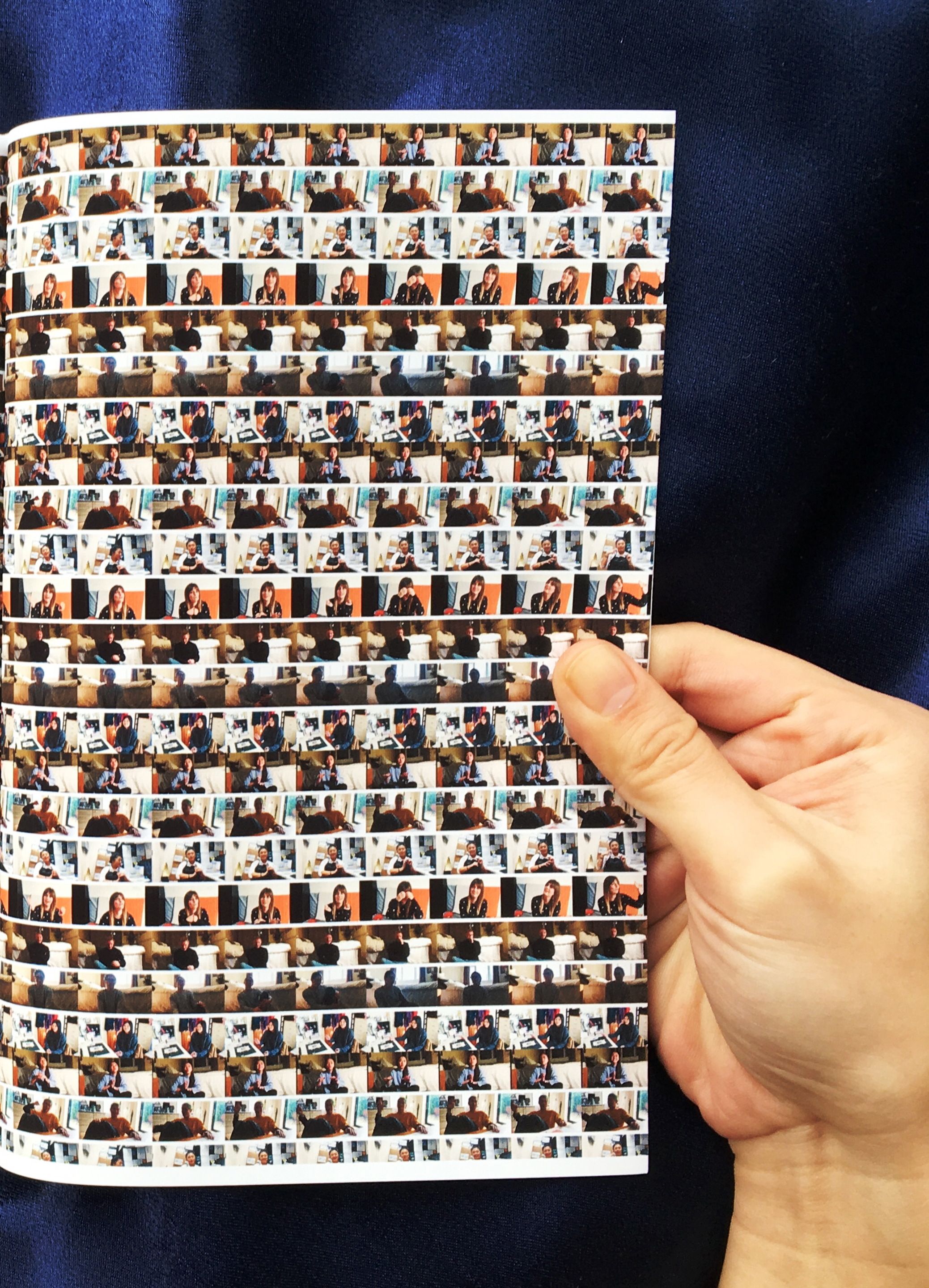






每個人的經歷與回憶都是不同的,也因此造就了個人的獨特性,使我們與他人不同。你曾經思考過別人看到的世界是什麼樣子嗎?當聽到海的聲音時,每個人的感受相同嗎?一杯一樣的咖啡,每個人品嚐都會有一樣的味道嗎?什麼樣的刺激可以影響我們最多?這個實驗的啟發是來自於我對人的好奇,我的感受是否他人也與我相同?我選擇了一些不同國家的人參與這個實驗,比較在不同環境下成長的人,人們對感受是否會有迥然不同的體驗。
這是一個訊息傳遞的實驗,我準備兩個音源檔案給測試者們聆聽,之後測試者使用指甲油當顏料把感受畫出來,沒有時間上的限制,但只能使用三個顏色。
這是一個訊息傳遞的實驗,我準備兩個音源檔案給測試者們聆聽,之後測試者使用指甲油當顏料把感受畫出來,沒有時間上的限制,但只能使用三個顏色。







這之中他們聽到生活中平常且熟悉的聲音,一個倫敦市內的環境音,另一個是海浪滂薄的聲音。使用指甲油,一個不是普遍的使用在繪畫的用具,刻意的營造對測試者感受上的刺激。
這之後側錄測試者們說明他們聽聲音時的感受與想法,以及他們為什麼選擇這些顏色和他們的畫想要表達的訊息。第二個階段,一批完全不同的人,當他們看完所有第一階段的畫,我請他們用母語寫下他們看到的以及感受到的。文字與圖像,這兩者在表達訊息時,文字可以明確的傳達,並且可以讓閱讀者容易了解,相比之下圖像則無法確切的傳遞,但可以延伸出許多不同的訊息。
測試者與我之間是情感的給予者和訊息的傳遞者。
這之後側錄測試者們說明他們聽聲音時的感受與想法,以及他們為什麼選擇這些顏色和他們的畫想要表達的訊息。第二個階段,一批完全不同的人,當他們看完所有第一階段的畫,我請他們用母語寫下他們看到的以及感受到的。文字與圖像,這兩者在表達訊息時,文字可以明確的傳達,並且可以讓閱讀者容易了解,相比之下圖像則無法確切的傳遞,但可以延伸出許多不同的訊息。








透過書的呈現方式,我想重現實驗的過程給閱讀者,即便他們沒有經歷過第一階段的聲音的部分,但仍然可以感受到第二個階段,也藉由書的形式而成為了第三階段的測試。


Memories and experiences are essential building blocks for personality; they differentiate people from one another. What does the world look like from another’s view? Do they feel the same feelings as others while listening to the sound of the sea? While people drink coffee, do they have the same multisensory experience? Which excitement is most impactful? I was curious about how different we are, so I decided to construct an experiment, using a small group of people from different backgrounds and nations of origin. Since my participants are from various backgrounds, will they find this sensation experience extremely different?
This experiment implements a message-passing process; the test subject uses nail polish to draw their feelings after listening to the sound. Every drawing only uses three colours; there is no time limit for painting. They are then exposed to two sounds: firstly, a recording of a day in the London city center, secondly, the sound of the ocean. The sounds are very typical in a human's life, but using nail polish as an unusual pigment, I try to create a conflict to observe the participant’s reaction.
I had a recorded interview with each participant after they finished painting, having them explain what they felt from the sound and what they drew as a result. Afterwards, I showed each participant’s painting to other groups of people outside of the experiment, and asked them to write down their feelings. Words are different from paintings – a word can pass a message more directly and understandably in comparison.
This experiment implements a message-passing process; the test subject uses nail polish to draw their feelings after listening to the sound. Every drawing only uses three colours; there is no time limit for painting. They are then exposed to two sounds: firstly, a recording of a day in the London city center, secondly, the sound of the ocean. The sounds are very typical in a human's life, but using nail polish as an unusual pigment, I try to create a conflict to observe the participant’s reaction.
I had a recorded interview with each participant after they finished painting, having them explain what they felt from the sound and what they drew as a result. Afterwards, I showed each participant’s painting to other groups of people outside of the experiment, and asked them to write down their feelings. Words are different from paintings – a word can pass a message more directly and understandably in comparison.


I tried to represent the participants’ feelings via the book, while the audience looks at the book without the sounds the participant had listened to. This book – which is a reproduction of the experiences of the project’s participants – is a way to continue the experiment with a greater audience. I served as the message receiver, while the participants served as the providers of emotions.